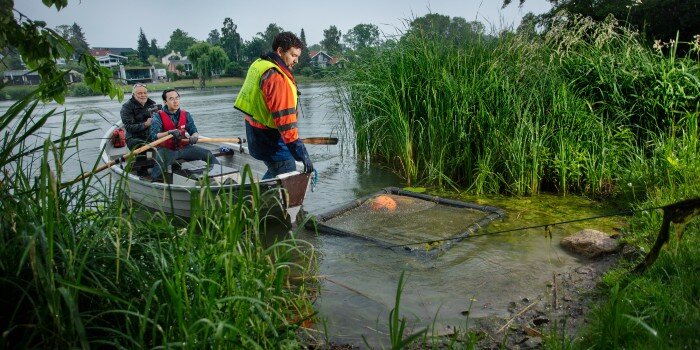
A Lake Søllerød pilot project employed electrodes successfully in oxygenating a lake bed. In a large demonstration test, the approach should now be tested. Around 75% of all Danish and European lakes present the problem of oxygen depletion and algae, mostly due to the miserable habits of wastewater discharging with high phosphorus contents directly into these lakes in the past. Therefore, the sediment in the lower lakes no longer has enough oxygen to destroy dead plants, fish, and algae, and often makes the lakes both slow and stinking.
Many strategies to oxygenate the lakes have been tested in recent years. But, in general terms, these activities were expensive and have only limited effect, according to Professor Stefan Trapp from DTU Environment who suggested the new and very promising strategy.
Stefan Trapp notes that their new approach is straightforward and cost-effective. According to him, they investigated the phosphorus concentration in the deepest water street by up to 94 percent first at the laboratory and then in the pilot project on Søllerød Lake with highly encouraging results.
Phosphorus Is Encapsulated
Stefan Trapp got the idea of employing electrodes to oxygenate the lakebed while listening to a lecture by his colleague Yifeng Zhang, who employs the technology in a variety of sectors.
Karl Haxthausen, DTU Environment, who was in charge of the practical side of the project, explained that in practice, the technique entails lowering two steel meshes into the lake’s top and bottom, respectively. A wire connects the two meshes, forming a kind of electric battery. The bacteria at the lower part of the lake discharge electrons as they break down dead plants and fish, which are captured by the steel mesh and travel to the surface mesh, where oxygen is present and can absorb the electrons.
According to Karl Haxthausen, the bacteria then can break down the dead organic matter as if there was oxygen present. In reality, the entire process occurs without the production of harmful methane. The elimination of electrons also affects the chemical at the bottom of the lake, which causes phosphorus to bond to the sediment and so to immobilize it.
An Entire Lake Is Being Tested
The new technology results in this enclosure of phosphorus, because in one centimeter on the bottom of the sediment more phosphorus than in 10 m deep water is found. The two steel meshes pilot project in Lake Søllerød began in summer 2019 and is now concluded.
Stefan Trapp says they want a great demonstration trial with a few small 4 x 4-meter meshes, but we want to evaluate our technique on a whole lake – an area of 100 x 100 meters. ‘If the result of the forthcoming project is equally successful, the new approach will undoubtedly play a vital part in future lake rehabilitation. It will also be interesting to apply it in maritime areas where oxygen depletion has comparable difficulties.
Reference:
- https://phys.org/news/2021-07-method-oxygenating-lakes-results.html
- https://mydroll.com/new-method-for-oxygenating-lakes-shows-promising-results/














